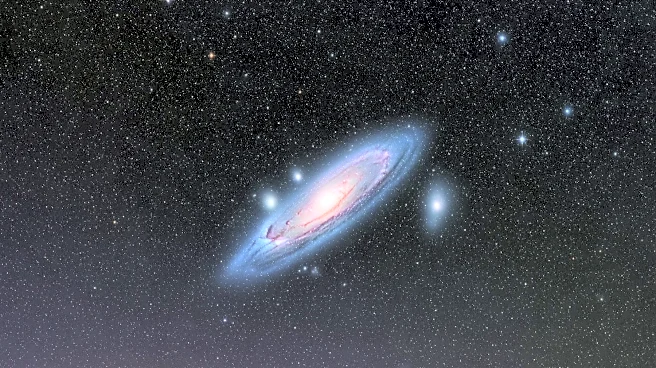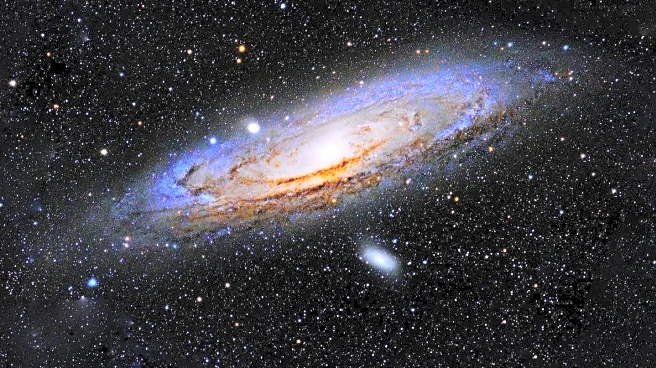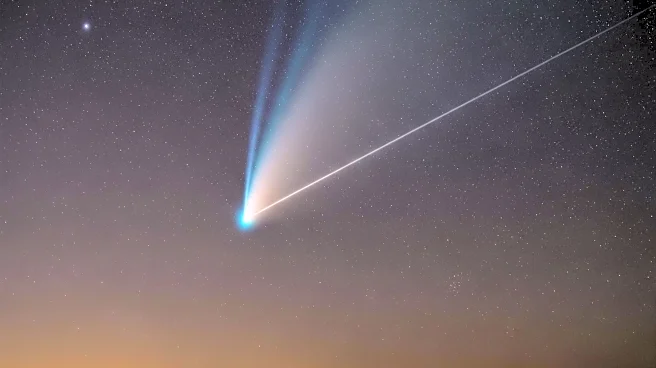What's Happening?
October is an ideal time for stargazers to observe the Andromeda Galaxy, as it rises high in the night sky. Located approximately 2.5 million light-years from Earth, the Andromeda Galaxy is the Milky Way's
closest galactic neighbor. It can be seen rising in the east at sunset, reaching its peak overhead at midnight, and transitioning to the northwestern sky by dawn. The galaxy's vast spiral arms host over a trillion stars, orbiting a supermassive black hole at its core.
Why It's Important?
Observing the Andromeda Galaxy provides a unique opportunity for amateur astronomers and astrophotographers to capture the beauty of our cosmic neighborhood. The galaxy's visibility to the naked eye from dark sky locations makes it accessible to a wide audience, fostering interest in astronomy and science. The study of Andromeda can also offer insights into galactic formation and evolution, contributing to the broader understanding of the universe.
What's Next?
Astrophotographers are encouraged to take advantage of the clear October skies to capture images of the Andromeda Galaxy. Guides and resources are available to assist in photographing the galaxy using telescopes and smartphones, allowing enthusiasts to share their observations with the scientific community.
Beyond the Headlines
The Andromeda Galaxy's proximity to the Milky Way makes it a key subject for research on galactic interactions and potential future collisions. Understanding its structure and dynamics can inform theories about the fate of our own galaxy.











